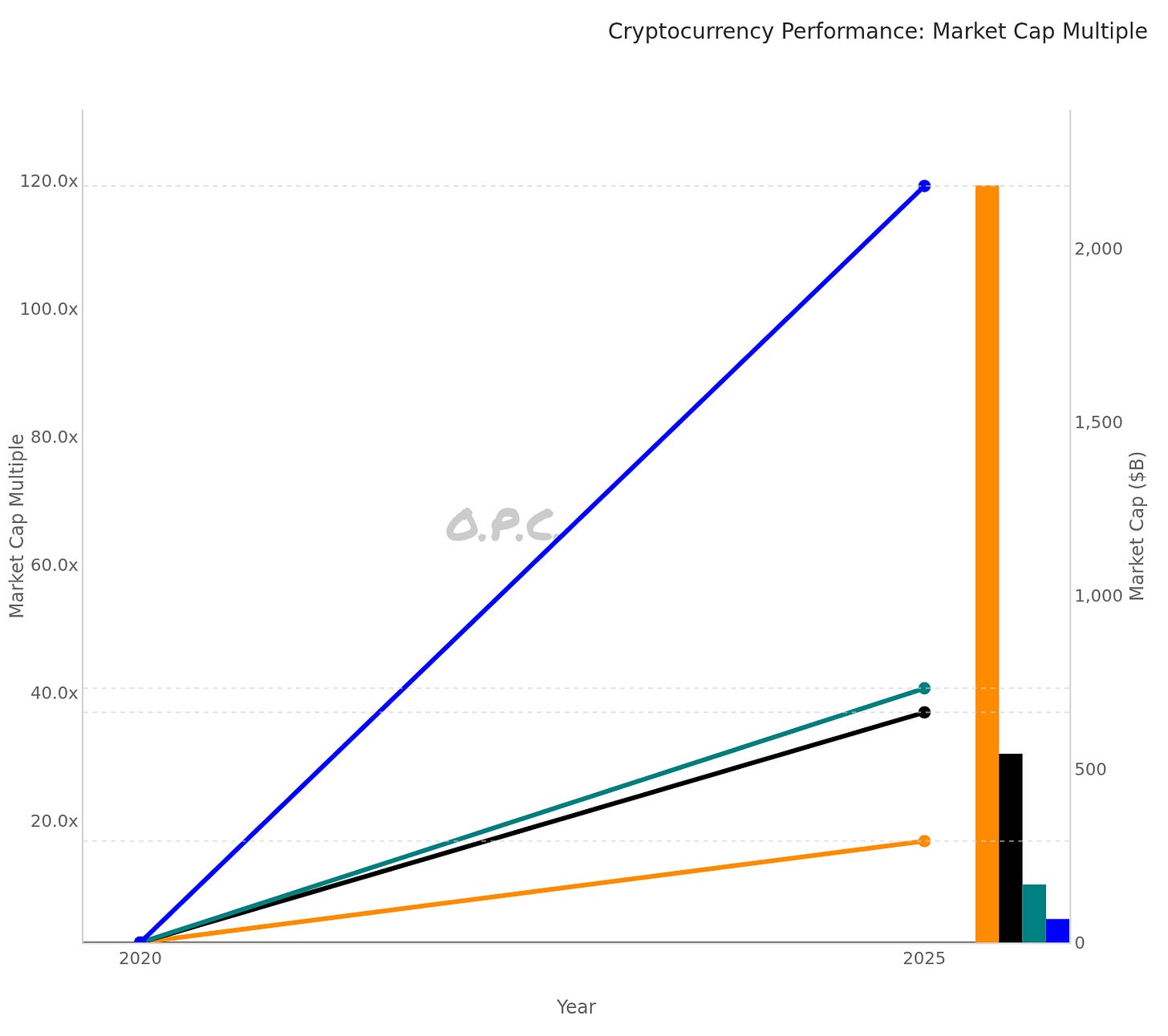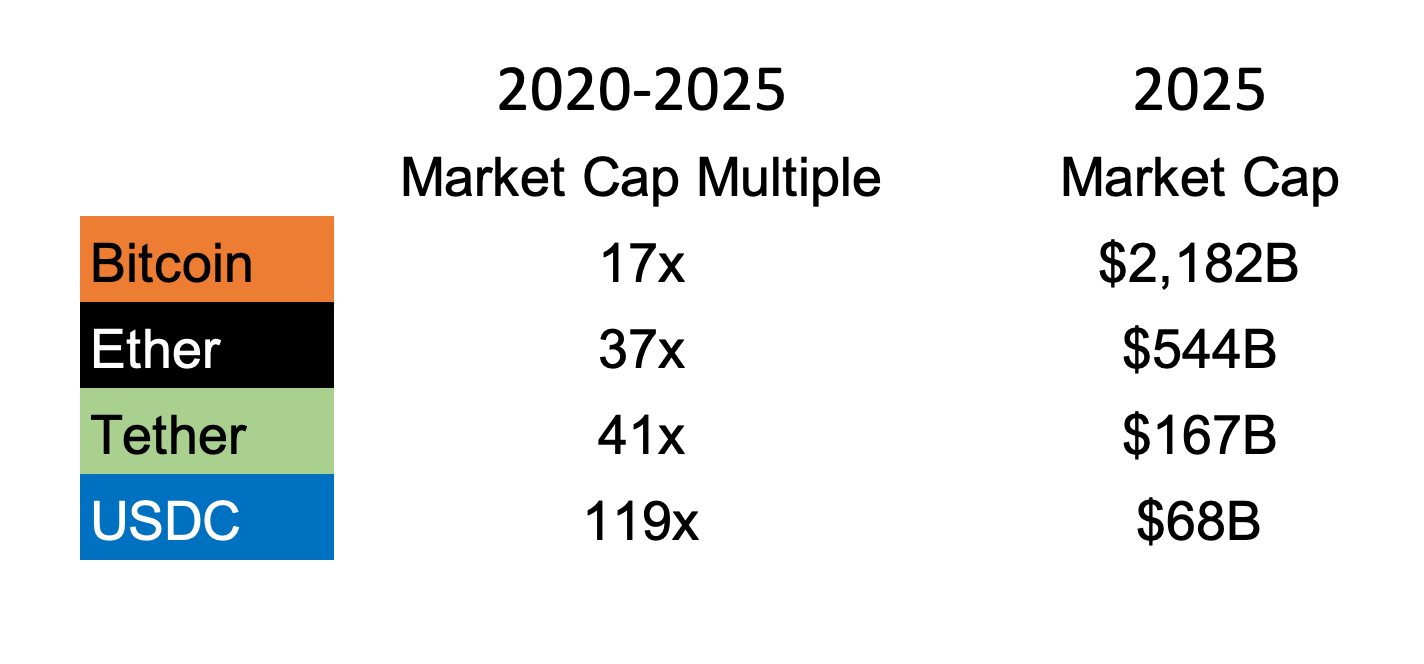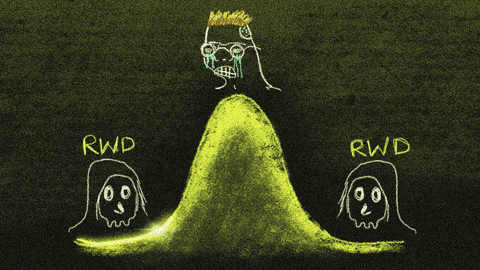Market Cap Multiple
Beware of volatility sponges ...
To recap the above
Bitcoin is a fixed supply asset, market cap ↑ 17x in 5 years
Ether and Tether are elastic supply assets, market cap ↑ 37 and 41x in 5 years
USDC is also an elastic supply asset, market cap ↑
110x in 5 years
Both Tether and USDC are US-dollar-denominated stablecoins, which means for every “coin” there is supposed to be a corresponding “proof of reserve” (i.e. a US dollar on the balance sheet).
Tether is owned by iFinex and not US-domiciled while Circle (the parent of USDC) IPO’d earlier this year and is de facto backed by the US government. This at least in part explains why it has grown three times faster than Tether over the last five years.
The point of this post
The common narrative is that fixed supply assets (like Bitcoin) are inherently more volatile because price is the only release valve for demand shocks.
Yet, the data above shows that assets with elastic supply can see even more explosive market cap growth … not because their price is more volatile, but because their supply can expand to absorb demand (like a sponge).
Elastic supply assets are designed to absorb demand with new issuance, which can make them “look” more volatile in market cap terms, but less so in price.
Fixed supply assets like bitcoin must absorb demand via price, leading to more pronounced price cycles.
Volatility sponges …
… have tail risks:
Peg: if the issuer can’t maintain the $1 peg the price can “break the buck” a catastrophic event for a stablecoin. Crypto people will remember this happened with Terra/Luna a few years ago.
Redemption: If too many people try to redeem at once and the issuer can’t meet demand, you get a “bank run” scenario. This is possibly less risky in the current era in which stablecoins seem to have the full backing of the US government.
Regulatory: Centralized stablecoins can be exposed to rehypothecation (lending the same coin more than once) or debasement.
Are Stablecoins more risky than bitcoin?
Maybe.
They are different, and in some ways, more dangerous:
Bitcoin risk is continuous and visible. You can hedge, trade, or simply accept it.
Stablecoin / USD risk is latent and can be catastrophic. Most of the time, it’s “safe” … until it isn’t. When the sponge fails, the risk is released all at once, often with little warning.
Some history is in order.
Do you know the US Government defaulted at least twice in the 20th century?
On April 5, 1933 - FDR issued Executive Order 6102 which made it illegal for US citizens to own gold. Citizens were mandated to hand over their gold at an exchange rate of $20.67 / oz. and then on January 30, 1934 gold was repriced at $35 / oz. …
US citizens were banned from holding gold until 1974
On August 15, 1971 - Nixon ended the convertibility of US dollars into gold - meaning the French who wanted many ounces of gold in exchange for $35 / oz. were told to take a hike - along with the rest of the world - ending the Bretton Woods agreement.
Key takeaways
Bitcoin’s volatility is easier to model and hedge
Stablecoin risk is harder to quantify and can be more systemic
Bitcoin is the most volatile in price
Stablecoins are the most volatile in market cap; price is engineered to be boring, but the market cap is a real-time barometer of crypto dollar demand






